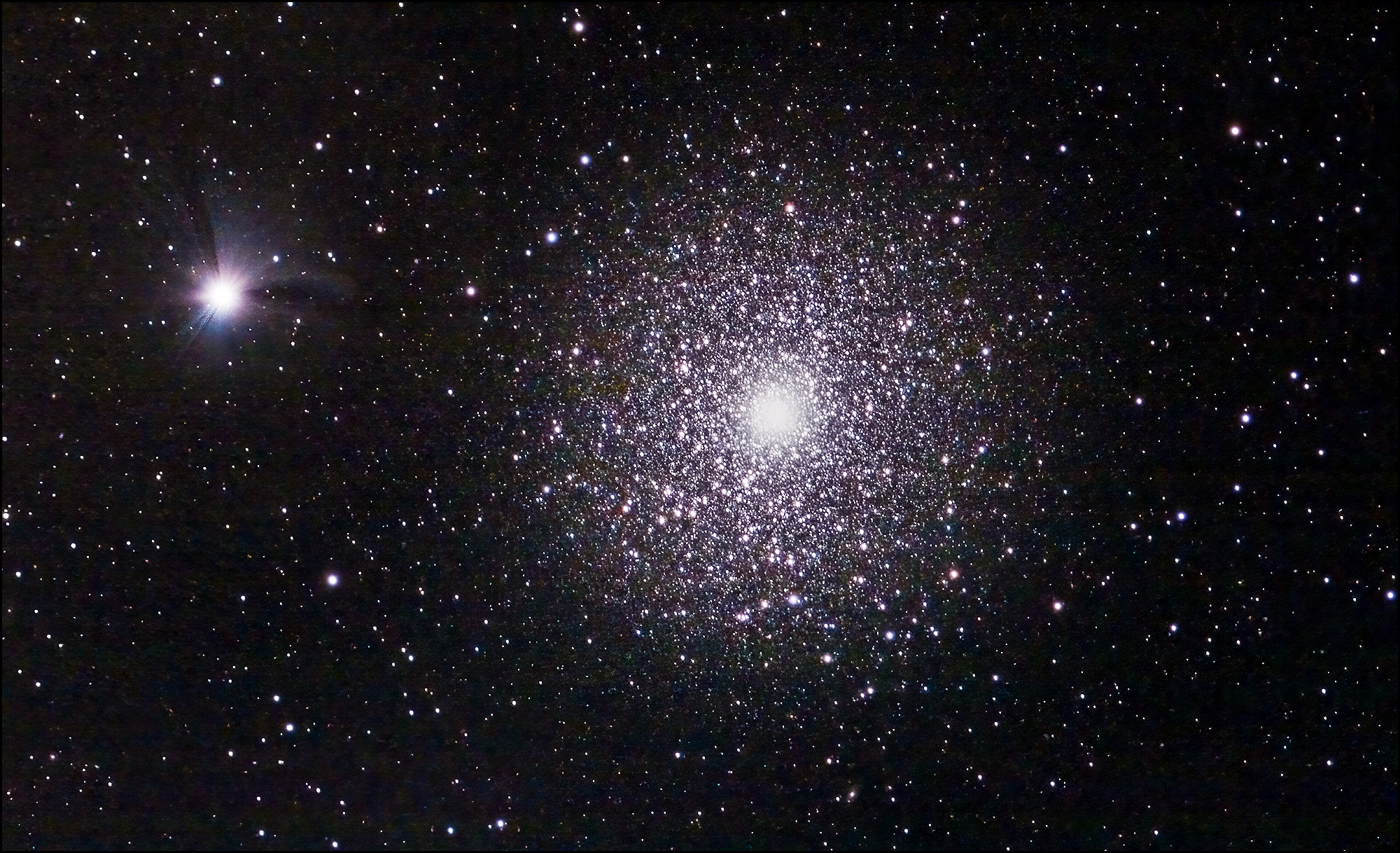I missed the Super Bowl on Sunday because I was driving out to the desert for my latest astronomy session. It was a dog's breakfast.
I set everything up normally, but for some reason neither the mount nor the focuser would work. After hours of investigation I discovered that, for some reason, the computer's virtual serial ports had been shut down last Thursday and then reinstalled when I turned on the laptop on Sunday. I have no idea how or why this could happen since the laptop wasn't even running on Thursday. It just sits around in sleep mode in between astronomy sessions.
In any case, the ports were somehow reinstalled differently or wrong and wouldn't communicate with either the mount or the focuser. Finally, with no idea what else to try, I rolled back everything to a week ago, and it worked! Unfortunately, it also wiped out all the settings from my astronomy program, which I slowly figured out and had to reset from memory.
Yeesh. But finally everything worked and, for the first time, I took a picture of a globular cluster. I've never done it before because globular clusters are boring: they are, as the name implies, just a glob of stars.
Still, they're some of the oldest stars in the galaxy. The cluster below is M5, aka the globular cluster in Serpens. It contains about 100,000 stars (out of 100 billion in the galaxy) and is about 10 billion years old. The bright star in the upper left is known as 5 Serpentis. It's a close star, only about 80 light years away (M5 itself is more than 20,000 light years from us).
I may try this one again someday. I cut the exposure time to 2 minutes per frame, but that might still have been too much. I also imaged it for only 90 minutes. It might be better with a shorter exposure to resolve the stars better and a much larger stack to resolve out the noise and (possibly) bring out the star colors better.


https://en.wikipedia.org/wiki/Messier_5
The cluster contains two millisecond pulsars, one of which is in a binary, allowing the proper motion of the cluster to be measured. The binary could help our understanding of neutron degenerate matter; the current median mass, if confirmed, would exclude any "soft" equation of state for such matter.[12] The cluster has been used to test for magnetic dipole moments in neutrinos, which could shed light on some hypothetical particles such as the axion.
i was always fascinated that neutron stars are basically like huge atomic nuclei, and the pauli exclusion principle keeps them from collapsing, which is apparently called the 'neutron degeneracy pressure'
if you keep adding mass, at some point gravity exceeds neutron degeneracy pressure, then theoretically you get to quark degeneracy pressure, and finally exceeding that will collapse it into a black hole
(if my understanding is wrong, feel free to correct me)
Sounds like the average day with either of my computers.
yeah, i had one machine with some static routes/ip addresses defined and windows update would blow it all away
so wrote a script to redefine those settings that i could run when that happened
OT but saw this today in an article on AI:
Schopenhauer: “Talent hits a target no one else can hit, genius hits a target no one else can see.” Will AI ever hit a target no one else can see?
That's what worries people. Jes' sayin'
Do the clusters rotate?
In the context of the ESO-VLT Multi-Instrument Kinematic Survey (MIKiS) of Galactic globular clusters (GGCs), we present the line-of-sight rotation curve and velocity dispersion profile of M5 (NGC 5904), as determined from the radial velocity of more than 800 individual stars observed out to 700'' (∼5 half-mass radii) from the center. We found one of the cleanest and most coherent rotation patterns ever observed for globular clusters, with a very stable rotation axis (having constant position angle of 145° at all surveyed radii) and a well-defined rotation curve. The density distribution turns out to be flattened in the direction perpendicular to the rotation axis, with a maximum ellipticity of ∼0.15. The rotation velocity peak (∼3 km s−1 in projection) is observed at ∼0.6 half-mass radii, and its ratio with respect to the central velocity dispersion (∼0.3–0.4 at 4 projected half-mass radii) indicates that ordered motions play a significant dynamical role. This result strengthens the growing empirical evidence of the kinematic complexity of GGCs and motivates the need of fundamental investigations of the role of angular momentum in collisional stellar dynamics.
https://iopscience.iop.org/article/10.3847/1538-4357/aac26a
On a less erudite note and for the non Einsteins among us, you missed the greatest Super Bowl and most watched tv show of all time. And Taylor/Travis were sweet…
It sounds like your first attempt at set up was a cluster 🙂
I have read up on Desert Center a bit and wow, is that a place that is more interesting than it looks.
Nice photo!
Did you run a star-color calibration in Astro Pixel Processor? Seems like a lot of magenta stars. You've obviously got your PA, tracking, and guiding figured out, they may be purple but they're round! (Or pinpoints).
Two minutes is a pretty long exposure to get good star color, at least in my experience. When I'm shooting for stars these days I'm often doing 30 seconds at a low gain (f/8, usually). Mind you my 183MM has a laughable 15K full-well capacity, your camera is much more tolerant.
The big-brain types say that you should see a few hundred pixels maxed out, but no more than that. For a target that's mostly stars, you could probably even tighten that down. It's not as if you'll lose nebulosity detail on the low end, after all.